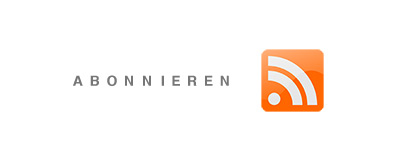This article explores the intricate relationship between European history and the formation of European identity, focusing on the House of European History in Brussels as a case study. It delves into how the House of European History portrays historical narratives and symbols to shape a collective European identity, reflecting on the challenges and opportunities in this endeavour. Through analysing exhibitions, narratives, and the museum’s role in fostering a sense of belonging and understanding among Europeans, the article sheds light on the complex interplay between history, memory, and identity in the European context.
On The Relationship Between “European History” And “European Identity” Using The Example Of The “House of European History” (Brussels)
Über den Autor
Wolfgang Schmale ist Historiker und wissenschaftlicher Publizist. Ein Schwerpunkt ist die Europaforschung.Teilen
Suche
Neueste Beiträge
- Richard Nikolaus Coudenhove-Kalergi: Erster Preisträger des Internationalen Karlspreises Aachen
- Europäische Demokratieunion
- Kann Demokratie überhaupt noch im einzelstaatlichen (nationalen) Rahmen praktiziert werden?
- What now for Europe, as global integration crumbles?
- 24. Februar 2025
- Trump und Putin gegen die Aufklärung
- Dem historischen Prozess der Befriedung durch Recht droht das Ende
- Europa 2024 – Eine Bilanz
- »Freiheit« – Angela Merkels Erinnerungen
- Datenschutz und Informationsfreiheit in europäischer Sicht – 8. Auflage des bewährten Handbuchs
Neueste Kommentare
- Peter Nemschak bei The EU’s Geopolitical Hideout in Myanmar – Georg Bauer on Borrell’s blog post on Myanmar
- Alexander Burstein bei Digitaler Humanismus – Lehren aus Covid-19
- Gerhard Kaucic bei Theorie des Digitalen Zeitalters
- Alexander Burstein bei Den Rassismus auf Abstand halten
- Alexander Burstein bei Der EU-Gipfel 17. Juli bis 21. Juli 2020 – Pyrrhussieg oder zukunftsfähige EU? Jedenfalls kein historisches Datum…
Archiv
- Juni 2025 (1)
- April 2025 (2)
- März 2025 (1)
- Februar 2025 (2)
- Januar 2025 (2)
- Dezember 2024 (2)
- November 2024 (2)
- September 2024 (2)
- August 2024 (1)
- Juli 2024 (3)
- Juni 2024 (3)
- April 2024 (2)
- März 2024 (2)
- Februar 2024 (1)
- Januar 2024 (1)
- Dezember 2023 (1)
- November 2023 (2)
- Oktober 2023 (2)
- September 2023 (1)
- August 2023 (1)
- Juli 2023 (1)
- Juni 2023 (1)
- April 2023 (1)
- März 2023 (2)
- Februar 2023 (1)
- Dezember 2022 (1)
- Oktober 2022 (1)
- Juni 2022 (1)
- Mai 2022 (1)
- April 2022 (1)
- März 2022 (1)
- Februar 2022 (3)
- Dezember 2021 (5)
- November 2021 (3)
- Oktober 2021 (2)
- April 2021 (2)
- Januar 2021 (1)
- Dezember 2020 (3)
- Oktober 2020 (3)
- September 2020 (1)
- August 2020 (1)
- Juli 2020 (2)
- Juni 2020 (1)
- Mai 2020 (3)
- April 2020 (2)
- März 2020 (3)
- Februar 2020 (2)
- Januar 2020 (1)
- Dezember 2019 (3)
- November 2019 (1)
- Oktober 2019 (1)
- September 2019 (1)
- August 2019 (2)
- Juli 2019 (4)
- Juni 2019 (1)
- Mai 2019 (3)
- April 2019 (3)
- März 2019 (2)
- Februar 2019 (2)
- Januar 2019 (3)
- Dezember 2018 (4)
- November 2018 (2)
- Oktober 2018 (2)
- September 2018 (3)
- August 2018 (2)
- Juli 2018 (3)
- Juni 2018 (5)
- Mai 2018 (1)
- April 2018 (1)
- März 2018 (3)
- Februar 2018 (5)
- Januar 2018 (2)
- Dezember 2017 (6)
- November 2017 (3)
- Oktober 2017 (3)
- September 2017 (2)
- August 2017 (2)
- Juli 2017 (2)
- Juni 2017 (2)
- Mai 2017 (5)
- April 2017 (2)
- März 2017 (4)
- Februar 2017 (4)
- Januar 2017 (3)
- Dezember 2016 (3)
- November 2016 (3)
- Oktober 2016 (3)
- September 2016 (3)
- August 2016 (3)
- Juli 2016 (3)
- Juni 2016 (3)
- Mai 2016 (2)
- April 2016 (4)
- März 2016 (4)
- Februar 2016 (4)
- Januar 2016 (3)
- Dezember 2015 (4)
- November 2015 (4)
- Oktober 2015 (5)
- September 2015 (4)
- August 2015 (3)
- Juli 2015 (4)
- Juni 2015 (4)
- Mai 2015 (5)
- April 2015 (4)
Schlagwörter
Antoine Vauchez
Armenier
Aufklärung
Brexit
Bundesverfassungsgericht
Corona
Covid-19
Democracy
Demokratie
Demokratie;
Digitaler Humanismus
Digital Humanities
Emmanuel Macron
EU
Europa
Europäische Identität
Europäische Kultur
Europäisches Kulturerbejahr 2018
europäische Solidarität
Europäische Union
Eurozentrismus
Flüchtlinge
Frankreich
Genozid
Geschichte
Griechenland;
House of European History
Immanuel Kant
Kolonialismus
Kultur
Macron
Martin Schulz
Mein Europa
Menschenrechte
Nationalismus
Paris
Polen
Praxeologie
Solidarität;
Staat
Türkei
Ungarn
Ursula von der Leyen
Vielfalt
Wiener Kongress

Dieses Werk ist lizenziert unter einer Creative Commons Namensnennung - Nicht kommerziell - Keine Bearbeitungen 4.0 International Lizenz.
Webdesign
www.media-solutions.at
© Wolfgang Schmale, Universität Wien

